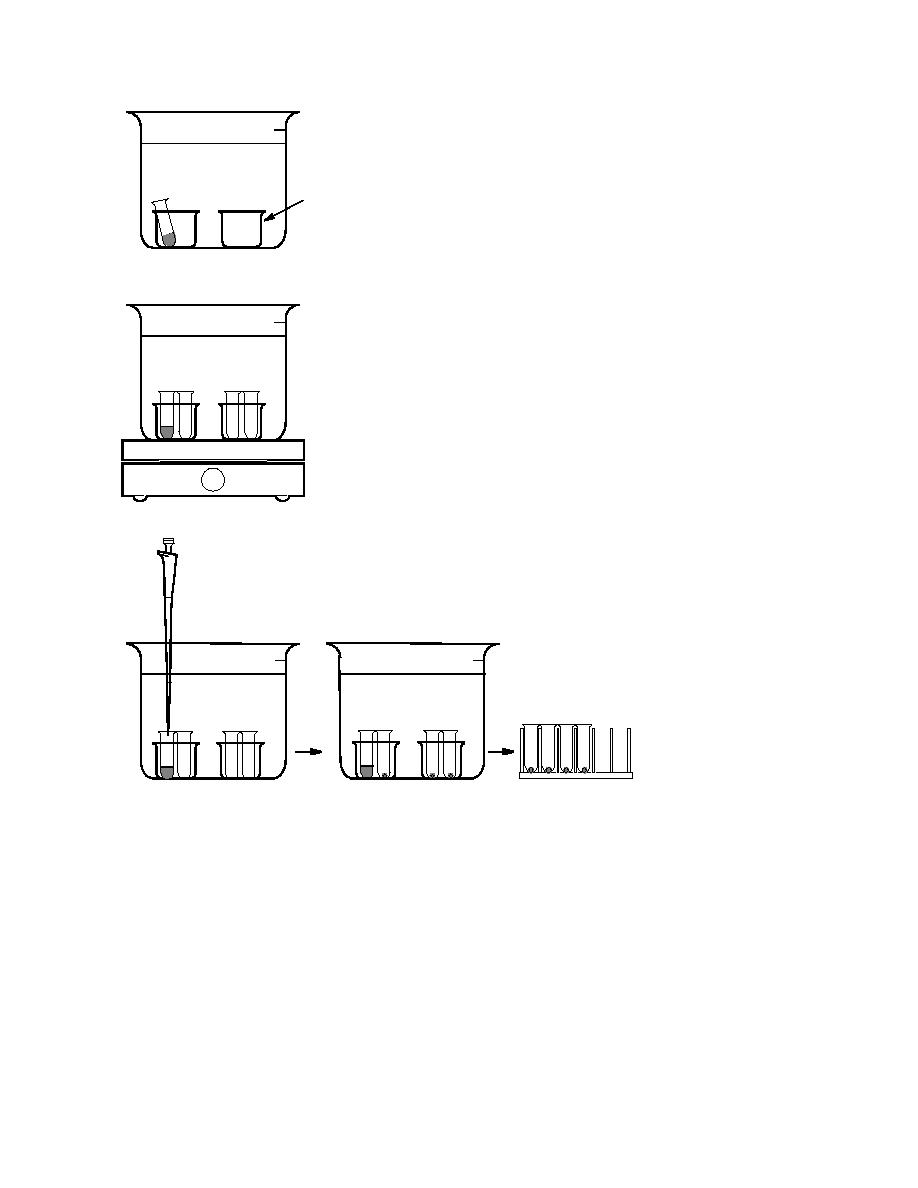
1L
f. The test tube containing the
1L Beaker
white phosphorus is placed in a
w/Water
large beaker containing water.
50 mL Beakers
1L
54C
g. The water in the beaker is heated
above the melting point of white
phosphorus.
h. White phosphorus droplets are
obtained using a positive displace-
ment pipet. The droplets will form
spherical particles once they are
cooled.
1L
1L
4C
Figure A1 (cont`d). Procedure for producing white phosphorus particles.
remain liquid below the melting point); thus the water should be cooled well below 44C to
ensure solidification of the white phosphorus.
Upon solidification, the 3-L droplets will maintain a spherical shape; larger droplets will
be ovoid. The particle dimensions may be measured by transferring the particles to a petri
dish containing reagent grade water and measuring with a calipers. Particles should be color-
less and translucent with a lustrous surface. If the particles are exposed to bright light, they
will turn yellow due to the formation of red phosphorus; therefore the particles should be
shielded from direct light while they are measured.
Once measured, particles should be transferred quickly to a bottle containing reagent grade
water and chilled to 4C in the dark.
Particles may be stored at 4C for approximately 48 hr. With time, a dull, white film will
form on the outer surface of each particle due to oxidation by dissolved oxygen in the water.
11



 Previous Page
Previous Page
